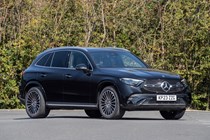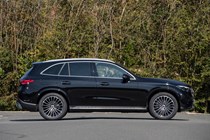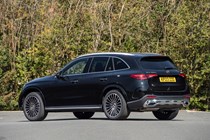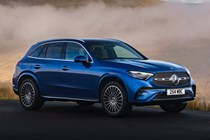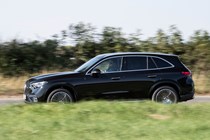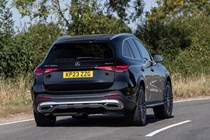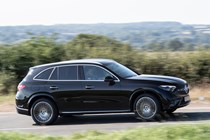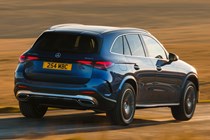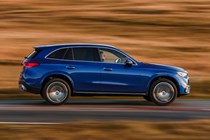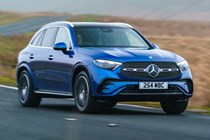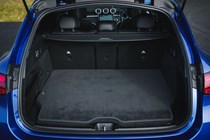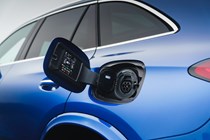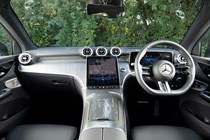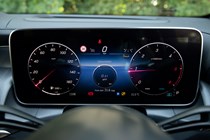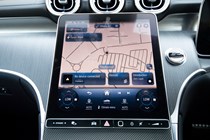
Mercedes-Benz GLC engines, drive and performance
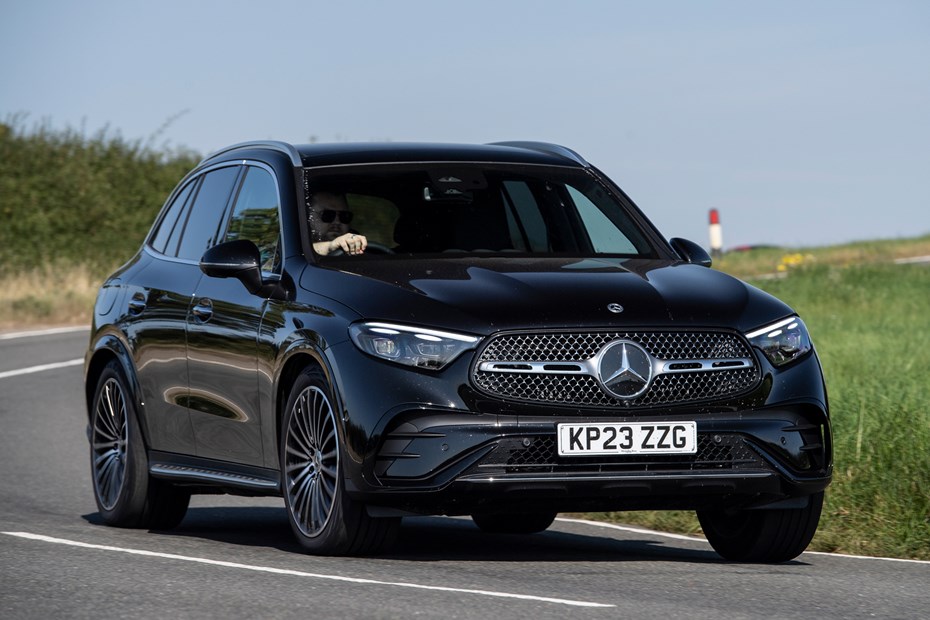
- UK buyers get two diesel and two petrols
- Plus, a pair of PHEVs – including a diesel one!
- It’s geared more towards comfort than handling
Petrol engines
There’s just one option here called the Mercedes GLC 300 4Matic. It features a turbocharged 2.0-litre four-cylinder engine with 258hp and 400Nm of torque – and it can shove the SUV from 0–62mph in just 6.2 seconds before hitting a top speed of 149mph. That’s quite impressive for an engine of this size in a car so blunt and heavy.
As an added benefit, the engine features mild hybrid assistance. There’s a tiny 22hp electric motor/generator bolted to the engine that captures energy that would otherwise be wasted when the car is slowing down and stores it in a small onboard battery pack. Then, when you put your foot down, the motor helps the engine to turn over, simultaneously improving performance and reducing fuel consumption.
Diesel engines
There are two diesel versions of the GLC to choose from – and both feature the same mild hybrid technology as the 300 petrol. The entry-level model is called the 220d. It’s powered by a 2.0-litre four-cylinder diesel engine with 197hp and 440Nm of torque, which Mercedes says is enough for a 0–62mph time of 8.0 seconds and a top speed of 136mph.
Above that, there’s the 300d. It features a more potent version of the same engine that churns out 269hp and 550Nm of torque. It’s far more muscular than the 220d, with a healthy slog of mid-range overtaking grunt and enough poke off the line to surprise smaller, more nimble cars. For us, this is the one to have as it will please more people more of the time.
Every version of the GLC features the same nine-speed automatic gearbox which, for the most part, is smooth and refined. It can get a little flustered if you ask for full throttle on the motorway, taking a good couple of seconds to shuffle through its deck of cogs for the right gear – but you can get around that by selecting the gear you want manually using the paddles behind the steering wheel.
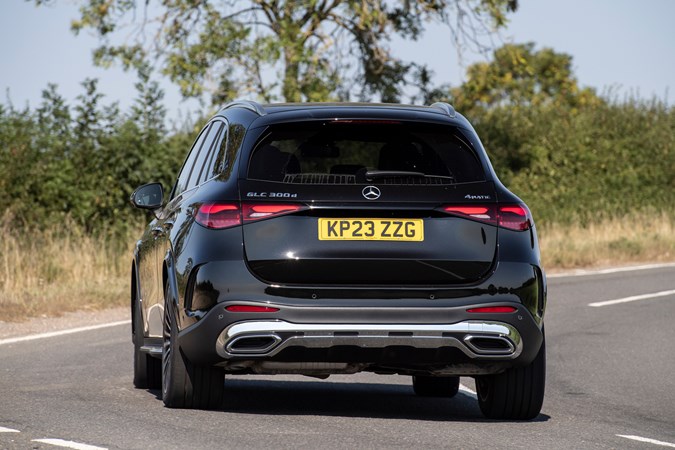
Hybrid engines
The GLC is available with two plug-in hybrid powertrains. There’s one built around a petrol engine and, unusually, one paired with a diesel. We’ve spent the most amount of time in the petrol-based 300 e, which mixes a 204hp 2.0-litre four-cylinder petrol engine with a 136hp electric motor and a 31.2kWh battery pack for a combined output of 340hp.
Its massive battery pack (which is larger than the one used to power a fully electric Dacia Spring) means the GLC PHEV can drive for up to 83 miles on electric power alone. Performance in electric mode is sufficient to keep up with traffic in most scenarios, too. We found you only really need to engage the petrol engine when joining the motorway or overtaking. Or when you drain the battery of electricity.
When you switch to Sport mode, both power sources are engaged and they give the GLC a surprising amount of poke. However, we wish the changeover from electric to hybrid mode was smoother. It can feel a little jarring – and the system is quite reluctant to respond to throttle orders.
The diesel-based 300de makes the most sense for those that need to cover huge motorway distances and potter around town. It mixes the 220d engine with the electric motor and battery pack from the 300e, which means you get a long driving range and, once you’ve drained the battery pack, fuel economy figures in the high-40mpg range.
What’s it like to drive?
- Firm suspension at low speeds
- But smooths out on the motorway
- Set up for comfort, not handling
Mercedes set the GLC’s suspension on the firmer side, which is a blessing and a curse depending on where you’re driving it. Unfortunately, the setup makes the car quite fidgety at low speeds. It jiggles over broken city tarmac far more than an Audi Q5 or BMW X3.
However, once you hit a motorway the chassis starts to make more sense. The damping has been engineered to work at speed – and it gets more comfortable the faster you drive. That firmness also helps to counteract buffeting from crosswinds and wash from lorries. It’s a very easy car to cover lots of motorway miles in.
If possible, we’d recommend opting for the optional Refinement package that adds air suspension. We tried the setup on the GLC’s international launch and found it made a huge difference to the car’s ride quality. Four-wheel steering is also included and boosts low speed manoeuvrability, by reducing the car’s turning circle. It’s not horrendously expensive on its own, but you’ll need Premium or Premium Plus trim before you can add it.

When you reach a corner, you’ll find the GLC’s steering system gets quicker the more you turn the wheel. But the change in ratio is more sudden than the systems you’ll find its two main rivals and there isn’t a lot of feedback, which makes it tricky the place confidently. This feeling is exacerbated by the four-wheel steering.
We did find that the GLC’s suspension can leave keen drivers wanting more. You can carry speed through the corners if you’re brave, but you’re always aware that you’re asking the GLC to do something it doesn’t want to.
Although it’s firm, the GLC doesn’t control its body as well as the BMW X3, especially over undulating surfaces. Push the car hard into a corner and you’ll find it gently pushes wide at the front before the electronic assists step in to neaten your line. The effect is exaggerated by the extra weight of the PHEV powertrains, too. It’s better with air, but we reckon the BMW is still the one to have if you’re a keen driver.



